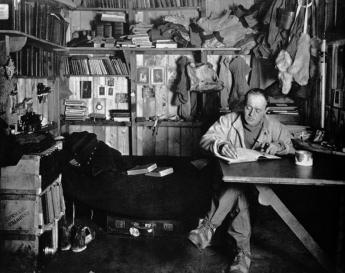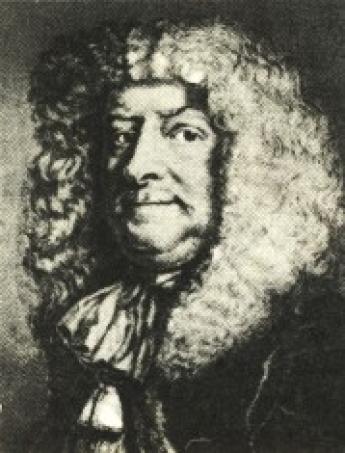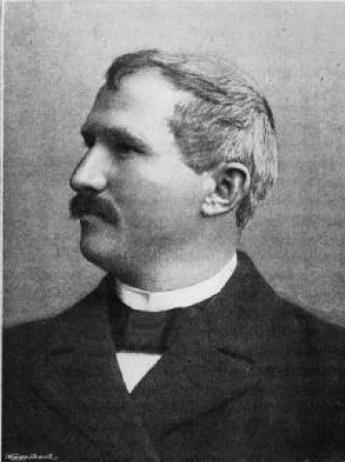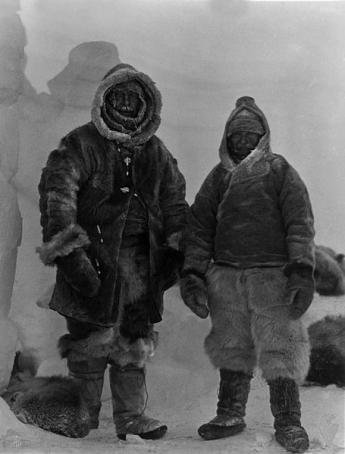Tip Verband Deutscher Antiquare e.V.
Collecting Rare Books and First Editions: Chilling Tales from the Icy Wastes II

By Frank Werner
The polar regions have always had a huge attraction for mankind and its explorers. What lay in or beyond those icy wastes? An open sea? The way to Asia? Probably no other field of exploration has brought forth so many heroes, sung and unsung, so much suffering and so many, often unnecessary, deaths. Probably most of the gruesome deaths in the icy reaches will never be known or told, but several made it into print from the 16th to the 20th century. I have picked some expeditions at random, my only criterion being that there had to be horrible suffering, death, and, if possible, cannibalism.
Part 2
Chronologically, next in line would be Captain Robert Falcon Scott, and his ill-fated try for the South Pole. But his and his men’s sombre fate have been written about and discussed so often that I’d rather back-track to a man who was not only worn down by the cold and disease, but by the greatest enemy of all: mindless bureaucracy.
Vitus Bering
(1681-1741) was a Danish navigator in the service of the Russian Navy. He is noted for being the first European to discover Alaska and the Aleutian Islands. The Bering Strait, the Bering Sea, Bering Island, Bering Glacier and the Bering Land Bridge all bear his name. Bering was ordered by Czar Peter I to find out whether Asia and North America are connected or whether they are separate land masses. During this first expedition he wintered in Kamchatka and noticed numerous signs indicating land in the east. He reported his observation to the Russian court and proposed a second, far more lavish expedition. This idea was taken up by Peter’s successor, Anna. An expedition, later called The Great Northern Expedition, was set into motion. It was one of the largest organised exploration enterprises in history, resulting in the mapping of most of the Artic coast of Siberia and some parts of the North American coastline. It was a veritable “travelling university” with J. G. Gmelin as botanist, G. F. Müller as ethnographer, Louis de l’Isle de la Croyère as astronomer, G. W. Steller, also a botanist. Poor Bering had no idea what he was facing. His difficult task was to organize the transport through 6000 km of unmapped mountainous areas and establish new quarters for the hundreds of men involved in the expedition, which included setting up a residence, barracks, warehouses, shops, guardhouses, clinics and even chapels. These tasks were additionally complicated by misleading or conflicting orders from the Russian bureaucracy and a lack of support from local administrators. It took poor Bering a full seven years until he could finally set out with two ships that were built in Ochotsk. In these seven years he had not only grown older, but old. Constant harassment by the Admirality and by local bureaucrats had taken their toll. He was accompanied on his ship St. Peter, by Steller, the biologist, on whose notes we rely for information of this ill-fated trip. On the 16th of July 1741 they achieve their goal: the Alaskan coast is sighted. Gmelin is not even interested enough to go ashore, and wants to leave right away. But Steller persuades him to give him 10 hours to study the flora and fauna. “10 years of preparation it took to get to this destination, and 10 hours were allotted to study it” he writes resignedly. The St. Peter explored the coast of Alaska and the Aleuts for two months, the situation on board getting worse and worse. The crew and the captain were ill with scurvy, the ship was ramshackle and nearly falling apart, water was scarce. In November, they anchored near an uninhabited island (now Bering Island, of course). The anchor chain broke, the ship was driven ashore and foundered. The sick simply lay on the freezing ground or dig small shelters to huddle in. They built a tiny hut for Bering and covered him with sand to keep the worst cold off. On the 8th of December he died of “hunger, thirst, cold, exhaustion and grief” as Steller notes. 46 of the 77 crewmen, including Steller, survived the winter. In spring the ship’s carpenter built a smaller boat from the timbers of the broken-up St. Peter, which made it back to Petropawlowsk.
After all these famous and powerful men who came to a tragic end, I would like to draw your attention to a “small” man who was ground up between two giants:
Hjalmar Johansen
(1867-1913). He was a Norwegian polar explorer who shipped with Nansen and Amundsen. Johansen joined Nansen’s Fram expedition in 1893. Nansen was glad to have him, as he was an expert dog driver and skier. Johansen and Nansen made their try for the pole in 1895. They approached as far as 86 degrees 14 minutes and were forced to turn back, wintering together in an igloo and living almost exclusively on bear meat. After his return, he and his shipmates were celebrated a s heroes. Johansen was promoted to captain in the Norwegian infantry, a role he didn’t succeed in. He drank heavily and left the army, participating in several expeditions to Svalbard. When Amundsen borrowed the Fram from Nansen, he received it under the condition that Nansen’s old companion was given a berth. When Amundsen learnt that Scott was also on the way to the South Pole, he made every effort to get there first. He started off too early in the year from his base at the Cape of Whales. The party ran into bad weather and had to turn back. Johansen had disagreed with the early start and had to rescue a less experienced member of the party, K. Prestrud, from freezing to death. Amundsen had taken the best dogsled and sped off towards the camp without regard for his men as a storm approached. Johansen, used to Nansen’s cautious and thoughtful ways, reacted as an older man would towards a hothead, and several angry quarrels were held before the men. Amundsen reacted by dismissing him from the South Pole Party. Adding insult to injury he ordered Johansen to subordinate himself to Prestrud, whom he, Johansen, had saved from certain death during the dash back to the camp. As we know, Amundsen returned triumphant from the pole. But he made sure to utterly crush poor Johansen: On landfall in Tasmania he dismissed him from the Fram and ordered him to return separately to Norway. After his return, he found that he was never to be credited by Amundsen for any contribution to the expedition, including his heroic rescue of Prestrud. He was not even awarded the Medal of the South Pole instituted by King Haakon V in 1912 to reward participants in Amundsen’s expedition. As a result of his disgrace, Johansen resumed his heavy drinking, became clinically depressed, and, in 1913, shot himself. He left behind a wife and four children.
After this sad tale of a single man who was destroyed by the inflated ego of his leader, I turn to a more spectacular story of bad luck, failure and suffering. As air travel began to be feasible, plans were made to reach the North Pole airborne. As we have seen, Andrée in his balloon didn’t make it. Zeppelins were all the rage, it was the Golden Age of Aviation between the two wars.
Umberto Nobile
(1885-1978) was an Italian aeronautical engineer and Arctic explorer. He was an acknowledged expert on the construction and use of airships, and when Roald Amundsen came up with the plan of flying over the North Pole, he turned to Nobile. Nobile, Amundsen and a mixed crew of Italians and Norwegians crossed the Pole on the 11th of May 1926, in the Norge and landed two days later in Teller, Alaska. This success encouraged Nobile to plan a new Polar flight, this time fully under Italian control. The airship Italia was constructed and flown to King’s Bay on Spitsbergen, where the supporting ship Citta di Milano awaited them. After several trial flights, on May 23, 1928, the Italia commenced its flight to the North Pole with Nobile as both pilot and expedition leader. With him were 16 men, and his little pet terrier, Titina. They reached the Pole, and threw several flags, and a heavy cross provided by the Pope, overboard. On their return trip they ran into headwinds, were forced down towards the ice and, on May 25th, the Italia crashed into the ice less than 30 km north of Nordaustlandet, Svalbard. Of the sixteen men in the crew, ten were thrown onto the ice, Nobile (and Titina) among them, the rest were swept away in the lightened ship, never to be seen again. Fortunately for the stranded men, a lot of equipment was thrown out of the control cabin when it hit the ice. The radio operator had even been able to save a portable radio set. Nobile had sustained a broken leg, broken arm and head injuries. They set up a tent (the famous Red Tent) and a radio mast at once and started sending out SOS. Unfortunately, the inept and disinterested crew of the Citta die Milano didn’t pay much attention. A few days after the crash the Swedish meteorologist Malmgren and Nobile’s second and third in command Mariano and Zappi decided to leave the immobile group and march towards land. Malmgren, who was injured and weakened, asked the two Italians to continue without him. These two were picked up several weeks later by the Soviet icebreaker Krassin. However there were persistent rumours that Malmgren was killed and cannibalized by Zappi and Mariano. When news of the crash finally reached the world, a search and rescue operation of unprecedented magnitude was launched: 23 aircraft, 20 ships and many dog-sled teams participated in the rescue effort. Amundsen volunteered to lead the search effort, but was rebuffed. He flew to Spitsbergen in a French plane, but the plane and the famous explorer were lost, never to be heard of again. The effort was bedevilled by official apathy and political interference by the Italians. The bravery on part of the Norwegian, Russian, Swedish, and Finnish pilots searching for the lost men, - as well as that of the survivors themselves – contrasted sharply with the woeful response of the Italian Fascist government. The lack of co-ordination meant that it took more than 49 days before all the crash survivors were retrieved. Nobile was the first to be airlifted out (again accompanied by the faithful Titina). He was later criticized for leaving his men and spent most of the rest of his long life trying to vindicate himself. What happened to little Titina I don’t know, but I do hope she lived a long and happy dog life!
And finally:
Alfred Wegener
(1880-1930). He was a scientist: Not interested in attaining poles, which are, after all, just geographical points in a barren landscape. He did not set out to find new lands or explore dubious routes between continents. No, he was interested in data, and data alone. He is most notable for his theory of continental drift, proposed in 1912, which hypothesized that the continents were slowly drifting around the Earth. His hypothesis was not accepted until the 1950s, when numerous discoveries provided evidence of continental drift. Although he had earned his Ph.D. in astronomy, Wegener was always interested in the then developing field of meteorology and climatology. He was a record-holding balloonist and pioneered the use of weather balloons to track air masses. He was involved in several expeditions to Greenland to study air circulation before the existence of the jet streams was accepted. In 1930 he led what was to be his last expedition to Greenland to conduct the first 12-month monitoring of arctic weather. Wegener felt responsible for the success of this expedition. He took the well-proven dog-sleds and skiers, but also propeller-driven sleds. Unfortunately, these did not work very well, and most of the hauling was done by dog-sled. The meteorological station was in the middle of Greenland, called Eismitte, and had to be stocked with enough provisions for two men to winter there. The expedition was late, due to thaw and trouble with the propeller sleds, and the two men in Eismitte sent a message that they would have to return, due to insufficient fuel. Wegener promised to bring them the fuel, so as not to endanger the whole mission, and on September 24th set off with thirteen Greenlanders and the meteorologist Fritz Loewe. The temperature dropped to minus 60° C, and Loewe’s toes became so frostbitten that they had to be amputated without anaesthetic. He later reported that the worst thing about the amputation was not the pain, but listening to Wegener whetting his Swiss Army penknife for hours to get it as sharp as possible. Twelve of the Greenlanders returned to West Camp, the remaining three members finally reaching Eismitte. As there were only enough provisions in the station for three men, they left Loewe there, and Wegener and Rasmus Villumsen took two dog sleds to return to West Camp. Six months later, in May 1931, Wegener’s body was found halfway between Eismitte and West Camp. He was buried with great care, presumably by Villumsen, who was never found. At 50 years of age and a heavy smoker, Wegener probably died of a heart attack due to overexertion. As the years pass, his body will stray further away from his homeland due to continental drift …
Coming soon: Odd Food in Strange Places
© Frank Werner (Brockhaus/Antiquarium)




